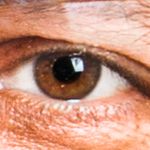 Adobe Community
Adobe Community
- Home
- Stock Contributors
- Discussions
- Generative AI rejections. Please help.
- Generative AI rejections. Please help.
Copy link to clipboard
Copied
I read the directions carefully, and I have submitted 10 AI images with 7 rejections. Oof! I hate to waste the reviewers' time. I understand a couple of them, but I can't see the difference between some of the rejected ones and some of the accepted ones. Here are some examples of rejected images. They all said "Quality Issues." What am I doing wrong??
 1 Correct answer
1 Correct answer
In general when zoomed in to 100% view, these examples are slightly blurry and are lacking fine detail, and there is noticeable noise and artefacts. Filters or effects, or the appearance of them, are mostly discouraged.
Copy link to clipboard
Copied
In general when zoomed in to 100% view, these examples are slightly blurry and are lacking fine detail, and there is noticeable noise and artefacts. Filters or effects, or the appearance of them, are mostly discouraged.
George F, Fine Art Landscape Photographer
Copy link to clipboard
Copied
Thank you! I realize you're a photographer and may not be a "digital artist" - maybe someone else could answer. But I find myself having difficulty reducing noise or sharpening without it looking like some other filter. Any tips? I have both photographs and traditional art in my Adobe stock portfolio, and the standards are different for each (and I can comply with them, with a fairly high percentage of accepted submissions), but I am having trouble figuring out where the standards fall for AI. For traditional art illustration, for example, paper texture is okay, but it seems to not be for AI, even when attempting to simulate traditional art media? I'm very confused.
Copy link to clipboard
Copied
The file type being submitted in would dictate the standards in my opinion. These are submitted as jpgs, so they'll be scrutinized as photos. I don't submit vectors so I know very little of their quality requirements.
For noise reduction and sharpening to be successful, there needs to be a good starting point with a lot of time detail present. I think this will challenging with AI, as the content has been sourced and manipulated already, potentially compressing the information used. And who knows how the original files looked when they started. I think however the AI program outputs a file is more or less what you are left with, and it's up to you to judge if the quality is sufficient for Adobes standards.
Good luck!
George F, Fine Art Landscape Photographer
Copy link to clipboard
Copied
Puppy:
Plenty of artefacts that come from upsized JPEG compression. And then you have things like this:
I saw it at 100%, but I sized it to 400% to see exactly what the trouble is.
Soccer ball at 100%: you have colour noise in:
Do you see the aliasing here?
Upsized compression artefacts:
Abstract:
Compression artefacts. Your water colour/silk painting does not look natural.
I think, the abstract painting could be made substantially better with Fresco starting from scratch.
Copy link to clipboard
Copied
Very helpful. Thank you!
Copy link to clipboard
Copied
You're welcome.
Copy link to clipboard
Copied
I suggest you read through how to create better photos for Adobe Stock and these tips that will help you identify flaws.
Best wishes
Jacquelin
Copy link to clipboard
Copied
The tips in "these tips" might be very helpful, but I was hugely turned off by the auto audio that started playing and startled me badly. Just FYI.
Copy link to clipboard
Copied
What audio???
Perhaps I don't notice any audio because autoplay is blocked from my browser preferences. Highly recommended, BTW. 😉
https://support.mozilla.org/kb/block-autoplay
Copy link to clipboard
Copied
Thank you for your observation. Of the two videos it's one that auto play and on all my devises it's muted. If it's not muted on yours, you can stop it, or mute it. The code I copied from LinkedIn comes as is. Those introductory videos are relevant to the the information and are themselves informative.
Therefore they will not be removed, and I will not be messing around with the links. It is very unfortunate that you get turned off from benefitial information because a part of it is an auto-start audio.
In any case, if you are so adversly affected by their presence you are free to opt off the page.
Best wishes,
Jacquelin
Copy link to clipboard
Copied
I was very startled because normally that doesn't happen with my current browser configuration and settings. I'm not sure how it got past my browser defenses. In any event, it won't keep me from taking a closer look now that I know that might happen. For what it's worth, I clicked through the link a couple more times, and it didn't happen again.
Copy link to clipboard
Copied
Hi Angela,
I have better experiences with AI based upscaler removing artefacts/pixels as well. In comparison AI Upscaler like Nero AI upscaler work much better than the traditional upscaler in Photoshop or the Midjourney upscaler. Try it out..
Best luck, Bolli
Copy link to clipboard
Copied
Hi Angela,
I have better experiences with AI based upscaler removing artefacts/pixels as well. In comparison AI Upscaler like Nero AI upscaler work much better than the traditional upscaler in Photoshop or the Midjourney upscaler. Try it out..
Best luck, Bolli
By @Bolli Hotshots
I doubt that your upscale is performing well. But in all cases, you are violating the terms of your contributor agreement, by uploading scaled up assets and that will get you banned.
Copy link to clipboard
Copied
As a side note: some artefacts get “enhanced” by upscaling, making them more visible.
Copy link to clipboard
Copied
Yes. There is an old adage in physics & photography, "you never get something for nothing."
Copy link to clipboard
Copied
Upscaling low resolution images is NOT ALLOWED for Stock submissions. They will be rejected by reviewers because upscaling introduces unwanted artifacts, pixel replacement and imperfections.
If you're planning on using AI image services, you must generate High Resolution Diffusions to begin with. DO NOT UPSCALE afterwards.
See Stock Contributor Submission Guidelines below. Adobe Stock customers expect the highest visual and technical quality for use in commercial projects.
- https://helpx.adobe.com/stock/contributor/help/reasons-for-content-rejection.html
- https://helpx.adobe.com/stock/contributor/help/quality-and-technical-issues.html
- https://helpx.adobe.com/stock/contributor/user-guide.html/stock/contributor/help/photography-illustr...
- https://helpx.adobe.com/stock/how-to/tips-stock-image-acceptance.html
- https://helpx.adobe.com/stock/contributor/help/vector-requirements.html
- Generative AI:
https://helpx.adobe.com/stock/contributor/help/generative-ai-content.html
Hope that helps.
Copy link to clipboard
Copied
I don't use an upscaler. I use AI tools that regenerate larger images instead of upscaling an image. This old conversation occurred as I was learning. And now that I haven't looked at AI tools for a week or so, I'm probably way behind again. But I don't use upscalers.
Copy link to clipboard
Copied
I don't use an upscaler.
By @Angela Micheli Otwell
Upscalers are great. I used upscaling pictures for gigantic posters. I took photos that were printed on paper, scanned them, cured all the scanning artefacts and upscaled them carefully to keep most of the sharpness and recreated the fine structure in the image. It was a 3-day work for an image on the wall for an exposition stand. The picture was gigantic and was bordering the limits of Photoshop and the capacity of my computer at that time. I just oversaw to cure a fingerprint on the scan.
Copy link to clipboard
Copied
What I meant was that I don't use an upscaler for images I submit to Adobe Stock 🙂
Obviously, different tasks require different tools.
Copy link to clipboard
Copied
For classic upscalers that makes totally sense. But for last gen AI upscalers, the result can beat anything if set-up properly. Old rules have to move with the future too.
Copy link to clipboard
Copied
For classic upscalers that makes totally sense. But for last gen AI upscalers, the result can beat anything if set-up properly. Old rules have to move with the future too.
By @flowimstudio
It makes no sense, as upscalers do not add information. Upscaling a JPEG file is of no good use. The buyer can do that on their own. It may make sense if you are upscaling the raw file, however.
Copy link to clipboard
Copied
Ok there are traditional upscalers and a big bunch of AI based upscaler, that add new pixels based on AI generation input and that.can remove JPEG artefacts, sharpen etc. AI generating diffusion models are able to generate pure images in the latent space based only on 512 px up to max 1024 px resolution, other AI models have the same limitations. Minimum Resolution for AI generated contenct at Adobe Stock is 4 Megapixel, and there is already a lot of accepted AI generated pictures available. So how the content creators reaches 4 Megapixel ?
There is also a minor area where AI content will bei multiplied to one image with a sufficent big resolution by tiling oder outpainting, so no AI based upscaling is required.
Copy link to clipboard
Copied
Ok there are traditional upscalers and a big bunch of AI based upscaler, that add new pixels based on AI generation input and that.can remove JPEG artefacts, sharpen etc.
By @Bolli Hotshots
That's what the buyer can easily do, when they acquire an asset and require a higher resolution for whatever reason. Upscaling does not add more fine structure, as would be taking a picture at the higher resolution. And taking a picture at a higher resolution does not make much sense if your lens does not capture the fine details.
I do not comment on what pictures are accepted or not based on upscaling. I know that many such pictures are scrap, and I know about whole portfolios who got deleted because of upscaling.
Copy link to clipboard
Copied
AI based upscalers add more fine structures opposite to the traditional upscalers. But it's absolutely not easy for me to find the right upscaling strategy for the concrete AI image and check the quality of the upscaled image. Sometimes I need several upscaling trials before Adobe Stock accepts the asset. Adobe stock should provide a meaningful quality check tool to their content uploaders to minimize efforts on both sides. Or anybody knows a meaningful quality check tool, perhaps AI-based solution ? Manual checks are too time wasting for the stock image business.










